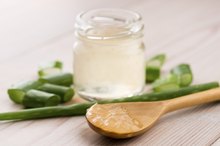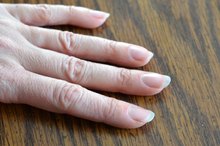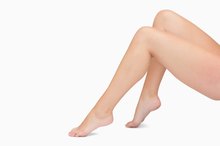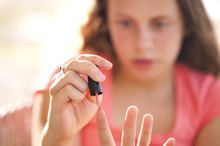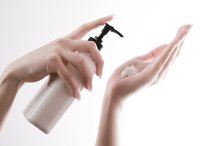How to Heal Torn Skin on Your Fingers
More than any other body part, fingers take the brunt of daily activities. The longest fingers on each hand are at the most risk for injury, but all of fingertips contain sensitive nerve endings that can make a tear painful or annoying. Whether you have torn skin from an injury or from a hangnail, practicing good wound care will help the fingertips heal quickly.
Tears From Hangnails
Wash and dry the torn skin in warm, soapy water. Using manicure scissors, trim hard, rough skin near the cuticle so it will not catch on objects and further the tear. Do not to trim soft skin, as this will worsen the tear and be painful.
Home Remedy for Deep Skin Cracks Around Nails
Learn More
Apply moisturizer to the hands throughout the day, or after hand washing, to restore moisture to the cuticles and surrounding skin. Use non-perfumed moisturizer, as the perfume alcohols will further dry the cuticles and worsen the tears.
File the nails to keep them short and even. Ragged, unkempt nails can lead to further development of new hangnails. Keep the area under the nails clean, using a nail brush with a tiny amount of soap and water daily. The brush also can remove debris around the hangnail that may cause infection.
How to Heal a Damaged Cuticle
Learn More
Apply cuticle oil at night, just before bedtime. Place one drop of oil on each nail bed, where the cuticle meets the nail. Gently massage the oil into the nail and surrounding cuticle. Place thin cotton gloves on your hands to keep the oil in place for a deeper cuticle treatment.
Do not bite, chew or pick at the torn skin. This can complicate the hangnail by introducing bacteria from the mouth into open areas of skin. Try chewing a piece of gum, keeping your nails trimmed or even covering the hangnail with a bandage if the temptation to chew is too great.
- Wash and dry the torn skin in warm, soapy water.
- Apply moisturizer to the hands throughout the day, or after hand washing, to restore moisture to the cuticles and surrounding skin.
Injured Torn Skin
Apply pressure to the skin tear, using a clean, dry cloth. Hold the pressure for 10 minutes or until any bleeding is stopped.
Wash the finger with torn skin with soap for five minutes under warm, running water. Thoroughly dry the area on a clean, dry cloth.
Apply a thin film of antibacterial ointment over the torn skin, and cover it with a clean adhesive bandage 3. Repeat Step 2 and 3 daily until the torn skin is healed.
Check with a physician to ensure your vaccinations, such as tetanus, are up to date. Tetanus vaccinations usually are valid for up to 10 years. Call a physician with any concerns about the depth or severity of the tear.
Tips
Occlusive bandages work well on the fingers, especially for the fingertip. Occlusive bandages look like a clear piece of cellophane and are adhesive on one side only. They also seal out moisture.
Warnings
Do not attempt to treat finger wounds at home that are not superficial. Deep cuts or cuts into the nail bed require professional medical attention.
- Apply pressure to the skin tear, using a clean, dry cloth.
- Hold the pressure for 10 minutes or until any bleeding is stopped.
Related Articles
References
- American College of Surgeons. (n.d.).Wound home skills kit: Lacerations and abrasions.
- dos Santos EI. (2014). Skin tear treatment and prevention by nurses: An integrative literature review. DOI:
- Guideline: The management of people with skin tears and/or pre-tibial injuries. (2015).
- LeBlanc K, et al. (2018). Best practice recommendations for the prevention and management of skin tears.
- Skin tears: Evidence informed practice tools. (2014).
Writer Bio
As a bachelor's-prepared registered nurse with more than 15 years of diversified experience, Juliet Wilkinson innerves our health-conscious population through expert articles. She is a motivated professional who believes that preventive care is the first step towards health and well-being.
